Abbie Rowe dedicated much of his professional photography career to documenting public buildings, parks, and eventually, the White House. Influence for Rowe's career path was strong since he was born into a family of photographers and worked as a freelance photojournalist early on. He was employed by the Bureau of Public Roads in 1930, and by 1932 was working for the Office of Public Buildings and Public Parks, which later became the National Capital Parks East, a division of the National Park Service (NPS). In 1941, as a NPS employee he was assigned to become the ex-officio presidential photographer at the request of President Franklin Roosevelt. His role as the first presidential photographer was to document the first family and their daily activities on and off the White House campus. From 1941 to 1967, Rowe photographed the presidencies of Franklin D. Roosevelt, Harry S. Truman, Dwight D. Eisenhower, John F. Kennedy, and Lyndon B. Johnson.
Rowe's photographs were instrumental in creating interest and awareness of America's national parks, especially along the Blue Ridge Parkway. He visited South Florida in the early 1950s, where he documented the newly designated Everglades National Park. Rowe passed away in 1967, but his legacy as a White House photographer and advocate for America's national parks continues.
Explore more images by Abbie Rowe through the Library of Congress and National Archives digital catalogs!
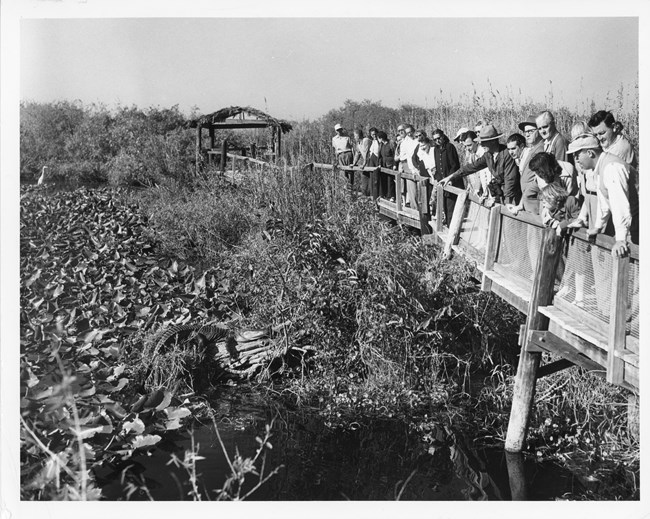
NPS photo by Abbie Rowe (EVER 12061)
Four miles from the entrance of Everglades National Park, the Anhinga Trail remains a popular spot for visitors to see alligators, turtles, herons, egrets, and other wildlife. Although the boardwalk looks a bit different today, visitors can still observe alligators, like the one shown in this photo from 1952.
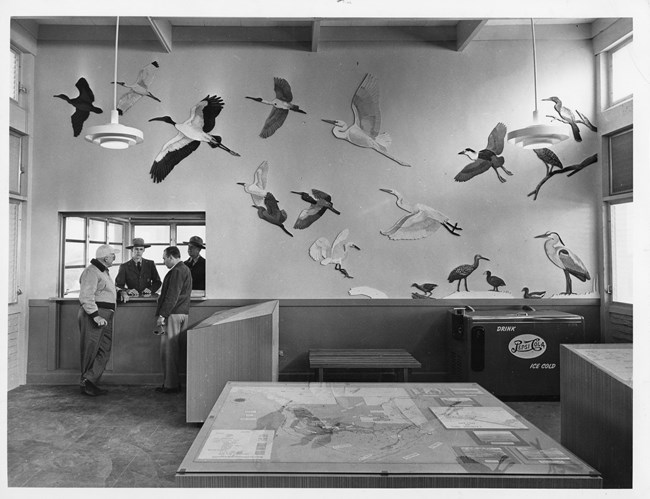
NPS photo by Abbie Rowe (EVER 12075)
Visitors flocked to the new Royal Palm Ranger Station shown here in 1952. It was later replaced by the current Royal Palm Visitor Center as part of the Mission 66 revitalization initiative. Mission 66 involved a commitment of one billion dollars in federal funds for general improvements and infrastructure enhancements to elevate the visitor experience. The sleek, modern designs of the Mission 66 structures are renowned throughout the National Park Service.
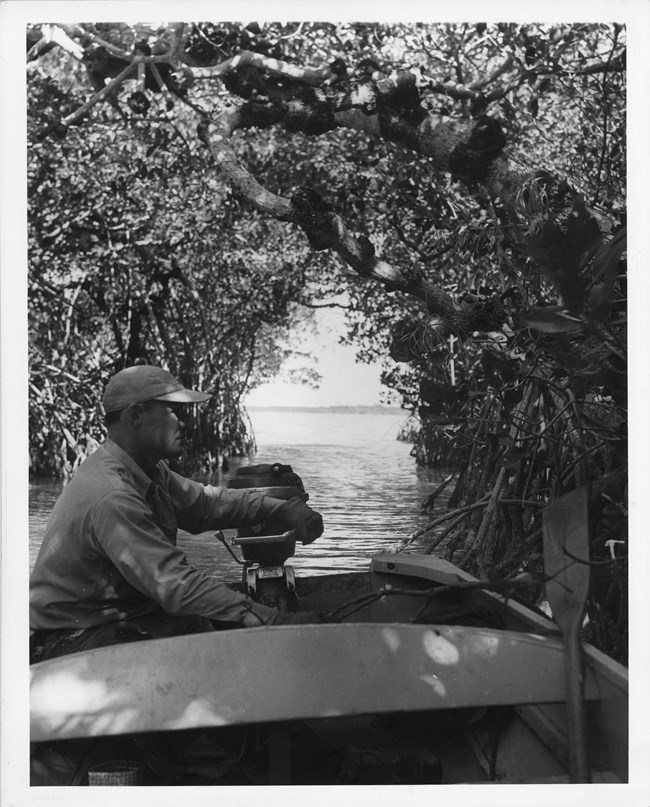
NPS photo by Abbie Rowe (EVER 12077)
A man navigates his motorized boat through the mangrove tunnels of the Everglades circa 1952. The Everglades are an extensive wetland crisscrossed by numerous waterways. Adventurers can traverse the glades by weaving through the mangrove forests or embark on a multi-day journey across the 10,000 Islands and Florida Bay.
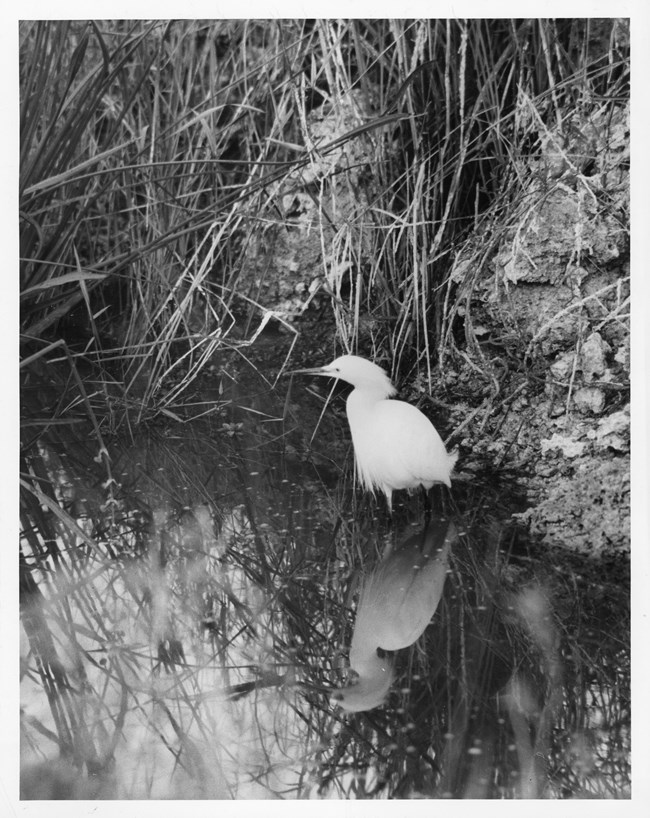
NPS photo by Abbie Rowe (EVER 12094)
The Snowy Egret displays its breeding plumage during the courtship season. Historically, poachers coveted these feathers as fashionable adornments for women's hats and accessories. Implementing safeguards for birds and their breeding plumage became a primary goal for environmentalists in the Everglades, contributing to the establishment of the Lacey Act in 1900. This legislation prohibits the unauthorized collection and sale of fish, wildlife, and plants.
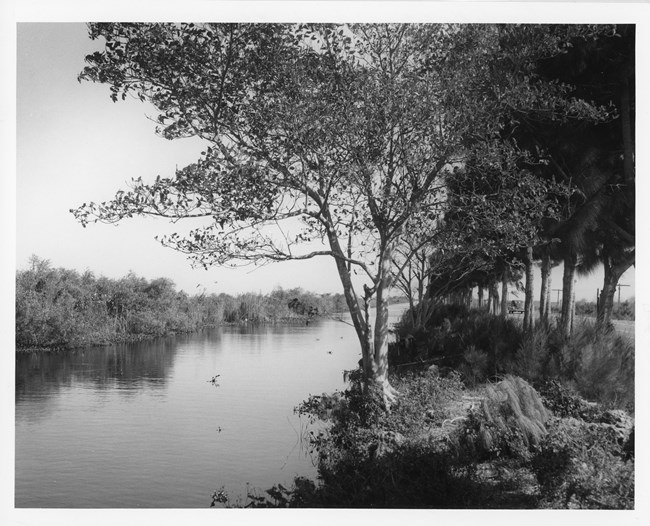
NPS photo by Abbie Rowe (EVER 12070)
Florida's Tamiami Trail, completed in 1928 and visible on the far right of this image, was the first roadway connecting Tampa and Miami. Its construction disrupted the natural water flow from Lake Okeechobee to the Everglades, destabilizing the fragile ecosystem. Efforts are ongoing to raise sections of the original roadway and restore the natural water flow to the Everglades.
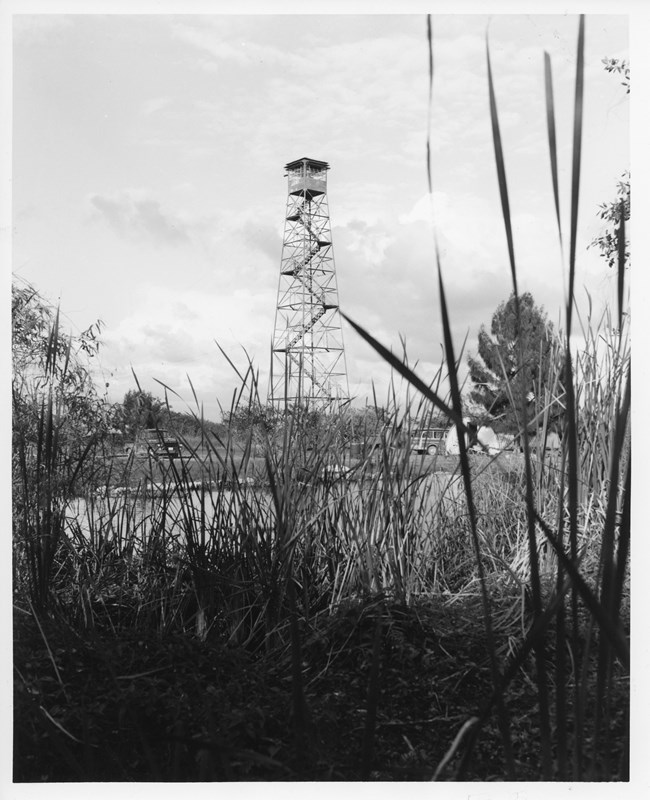
NPS photo by Abbie Rowe (EVER 12085)
The Seven Mile Fire Tower, seen here in 1952, was used to detect fires in the Everglades. Wildland fires are a critical and natural part of maintaining a healthy Everglades ecosystem. Philosophies regarding wildland fire management have shifted from suppression to the cyclic application of prescribed fire. This structure was replaced in 1964 by the popular Shark Valley Observation Tower, designed by Edward M. Ghezzi.
Last updated: February 20, 2025
